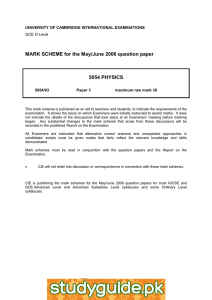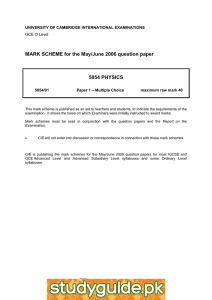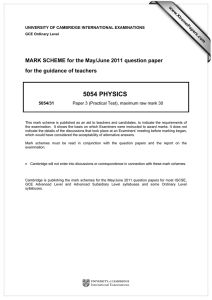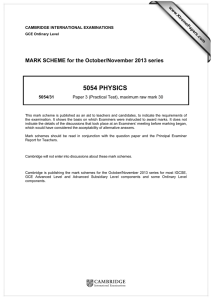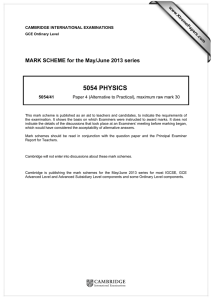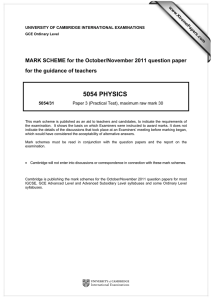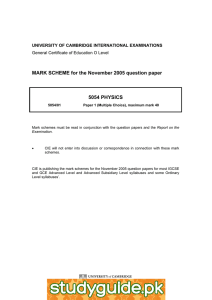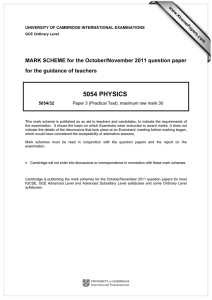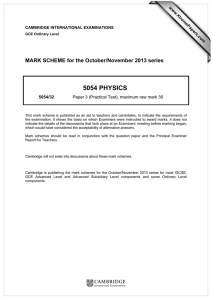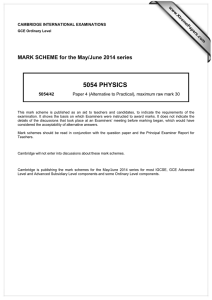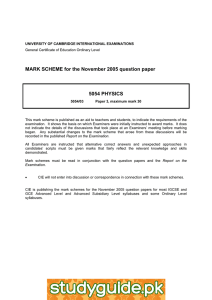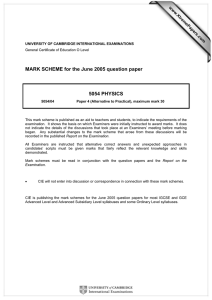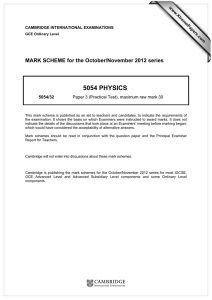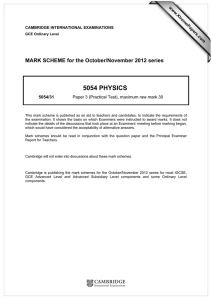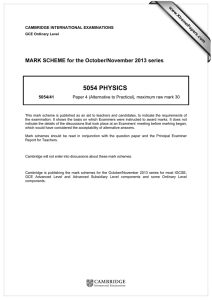5054 PHYSICS MARK SCHEME for the May/June 2014 series
advertisement
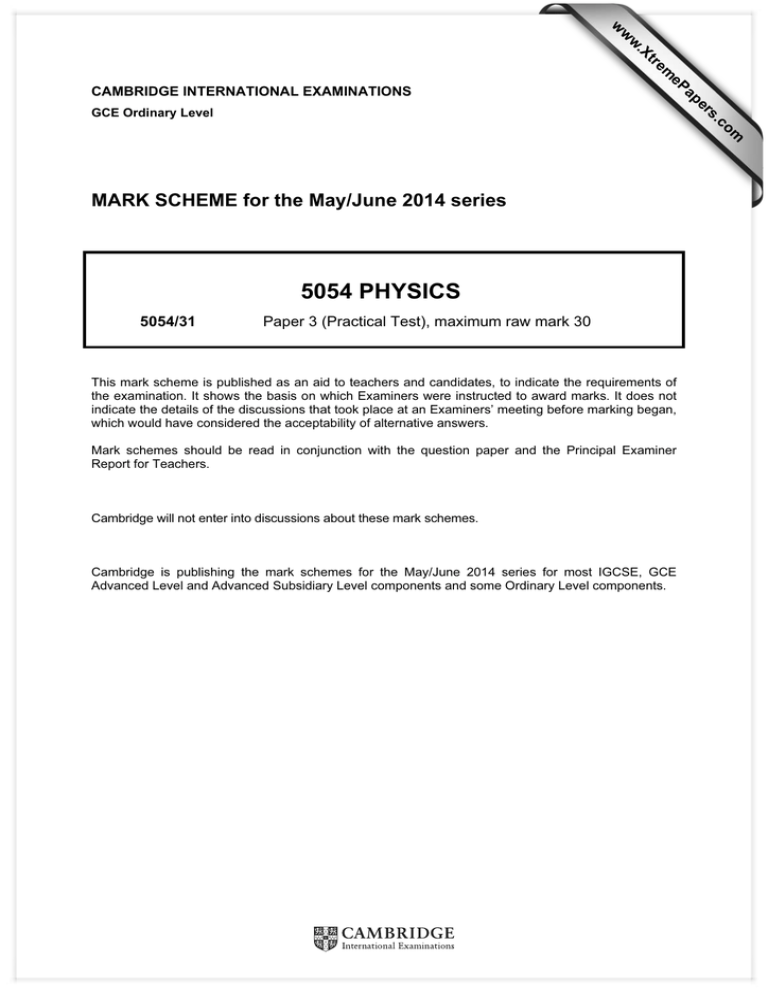
w w ap eP m e tr .X w CAMBRIDGE INTERNATIONAL EXAMINATIONS s er om .c GCE Ordinary Level MARK SCHEME for the May/June 2014 series 5054 PHYSICS 5054/31 Paper 3 (Practical Test), maximum raw mark 30 This mark scheme is published as an aid to teachers and candidates, to indicate the requirements of the examination. It shows the basis on which Examiners were instructed to award marks. It does not indicate the details of the discussions that took place at an Examiners’ meeting before marking began, which would have considered the acceptability of alternative answers. Mark schemes should be read in conjunction with the question paper and the Principal Examiner Report for Teachers. Cambridge will not enter into discussions about these mark schemes. Cambridge is publishing the mark schemes for the May/June 2014 series for most IGCSE, GCE Advanced Level and Advanced Subsidiary Level components and some Ordinary Level components. Page 2 1 Mark Scheme GCE O LEVEL – May/June 2014 Syllabus 5054 (a) measured the height above the bench in two places (and adjusted to get the same value) / aligned with horizontal surface in the laboratory, e.g. windowsill B1 (b) l = 48.0 + 0.2 cm, and h2 > h1 M1 all measurements to the nearest mm and unit seen somewhere (c) correct calculation to find h and x, using sensible values of h1, h2 and l (h2 approximately 60 cm and h1 approximately 40 cm) sensible M in the range 30 g to 70 g to 2 or 3 significant figures with unit 2 Paper 31 A1 M1 A1 [5] (a) diagram with more than half the numbers shown as inverted and laterally inverted B1 image is real (focussed on a screen) / inverted / laterally inverted / dimmer than the object B1 (b) (i) spacing found by measuring across more than one division. B1 (ii), (iii) m numerically equal to s (ignore presence of unit) v or m found from u or single s in the middle. 3 and v in the range 78.0 cm to 85.0 cm M1 (iv) f in the range 13.5 cm to 16.5 cm with unit. A1 [5] (a) V1 in the range 0.90 V to 2.20 V to 0.1 V or better and unit I1 in the range 30 mA to 85 mA to 0.01 A or better and unit B1 B1 (b) correct calculation of power with unit B1 (c) V2 less than V1 and I2 greater than I1 with units B1 (d) correct calculation of power (ignore unit) M0 power is larger because: total resistance decreases (and voltage is similar) / current increases and voltage is similar / parallel arrangement so power is dissipated in each resistor. © Cambridge International Examinations 2014 A1 [5] Page 3 4 Mark Scheme GCE O LEVEL – May/June 2014 Syllabus 5054 Paper 31 Table (b) table with units for θ and t B1 (c) at least 5 points with correct shaped curve B1 at least one attempt at temperature measurement to better than 1 °C at least 8 good values recorded and values taken up to 6 minutes (good values are ±1 °C from examiners best line) B1 B1 [4] Graph (d) axes labelled with units and correct orientation (allow e.c.f. from wrong unit in table but not no units) suitable scale, not based on 3, 6, 7, etc. with plotted data occupying [ half the page in both directions two points plotted correctly – check the two points furthest from the line this mark can only be scored if the scale is easy to follow (points must be within ½ small square of the correct position) best fit fine line and fine points or crosses (line thickness to be no greater than the thickest lines on the grid) B1 B1 B1 B1 [4] Calculations (e) tangent drawn to curve at t = 180 s B1 use of a triangle with a base > 180 s that uses a tangent which is a straight line B1 correct calculation (ignore significant figures and unit) B1 (f) M in the range 65 g to 85 g B1 (g) correct substitution with sensible m M1 correct calculation and consistent unit (W or J / min) (h) stir the water / eye level with meniscus on measuring cylinder or thermometer / thermometer not touching beaker / thermometer fully immersed / take average (provided results seen) © Cambridge International Examinations 2014 A1 B1 [7]
